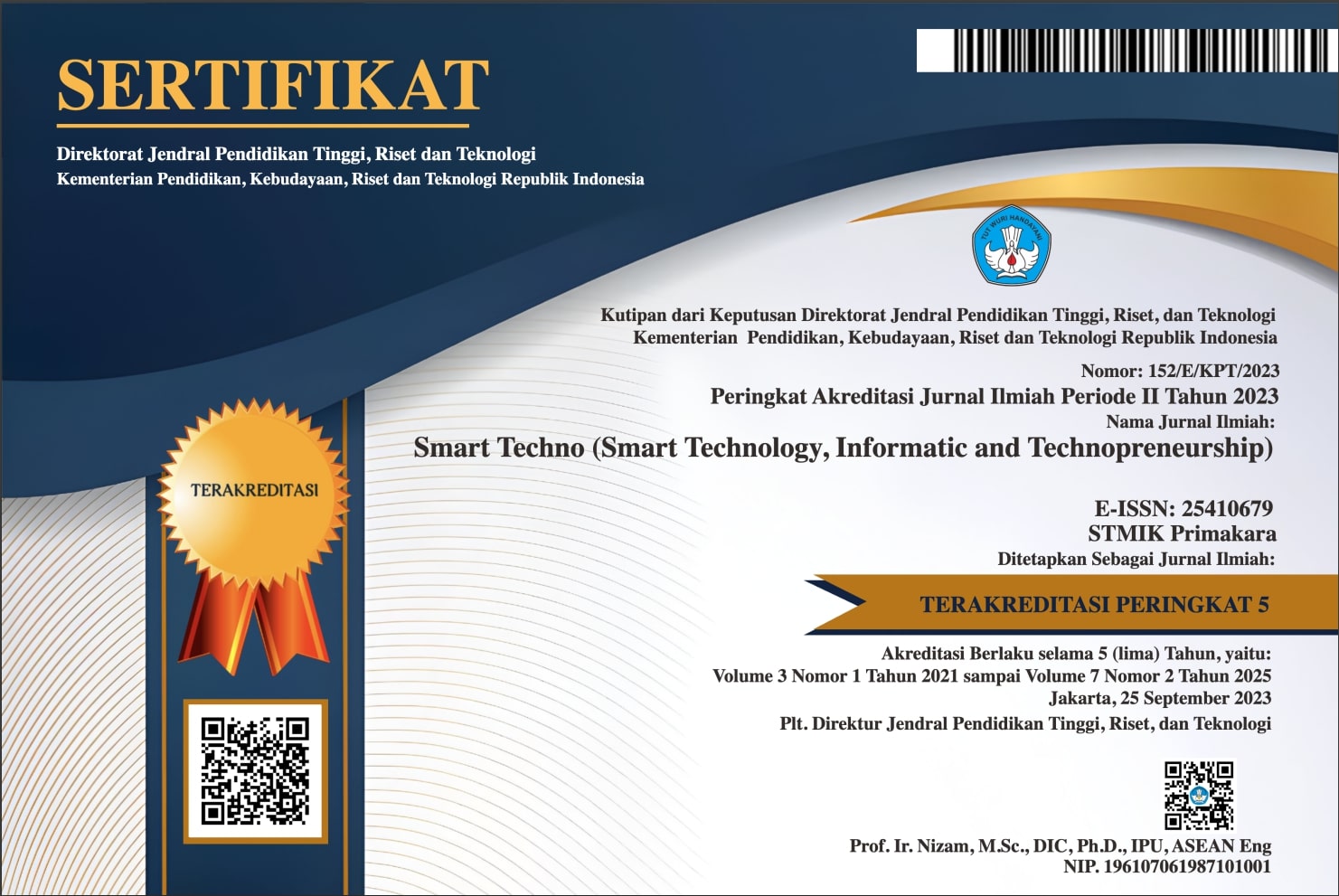Perancangan User Interface Website Menggunakan Metode User Centered Design (UCD) Studi Kasus Dao
Abstract
Media promotion is very important in a company. One of the promotional media that is currently often used is the website. DAO is one company that uses the internet as a promotional medium. DAO is a company engaged in the field of cosmetics, especially for women, by relying on natural ingredients and products that are environmentally friendly. DAO uses social media as promotional media, so they want to build a website, but DAO still has difficulty building a website. This study aims to create a DAO website design. This research uses the UCD (User Centered Design) method so that the results obtained can answer consumers' needs for purchasing products digitally through the website, of course in line with DAO's goal of wanting to promote through the website. The result of this research is the design of the DAO website User Interface design so that later it can reach more users and of course increase loyalty.
Downloads
References
Harminingtyas, R, “Analisis Layanan Website Sebagai Media Promosi, Media Transaksi Dan Media Informasi Dan Pengaruhnya Terhadap Brand Image Perusahaan Pada Hotel Ciputra Di Kota Semarang”, Jurnal STIE Semarang, pp. 37-57, 2014.
Wiryawan, M. B, “User Experience (Ux) Sebagai Bagian Dari Pemikiran Desain Dalam Pendidikan Tinggi Desain Komunikasi Visual”. Humaniora, pp. 1157-1166, 2011.
APJII, Buletin APJII. Jakarta: Asosiasi Penyelenggara Jasa Internet Indonesia, 2020
Riyant, A. D, “Pembuatan Website Sebagai Media Promosi Yang Terpercaya”. Seminar Nasional Informatika 2015 pp. 28-35, Yogyakarta: UPN Veteran Yogyakarta, 2015.
Indahsari, R. D., Setyanti, E., “Desain Simple Dan Modern Dalam Perancangan Website Penjualan” . Jurnal Jitika,pp. 26-36, 2012.
Hatta, H. R., & Denge, N, “Perancanagan Sistem Informasi Terpadu Pemerintah Daerah Kabupaten Paser”, Jurnal Informatika Mulawarman, pp. 47-54, 2009.
Siregar, H. F., Siregar, Y. H., Melani. “Perancangan Aplikasi Komik Hadist Berbasis Multimedia” , Jurnal Teknologi Informasi, 113-121, 2018.
C. Sumichan, Pewawancara, Key, L, Stylescape How Important It Is ?, 2021.
Prakarsa, A. G., & Sujarwo, A. “Pemanfaatan Vue Js Pada Fitur Pengaturan Tambak Dalam Aplikasi Budi Daya Tambak Jala”. Jurnal TIK, pp. 1-5, 2021.
Kala’lembang, A., Islamiya, M, “Aplikasi Pengolahan Presensi Perkuliahan Dengan Metode Low Fidelity Prototypedi STMIK Asia Malang”. Jurnal Ilmiah Teknologi Informasi Asia, pp. 147-157, 2018.
Andrian, R., Ardiansyah, Fitria, M. “Rancangan Prototipe Aplikasi Informasi Penyewaan Gedung Pernikahan di Banda Aceh. Kitektro”, pp. 19-27. 2020.
Bahari, F. M., Effendy, V., Dawam , D, “Model User Experience Aplikasi Pembelajaran Anatomi Tubuh Manusia Untuk Anak Kelas 5 SD dengan Teknologi Augmented Reality menggunakan Metode User Centered Design. eProceedings of Engineering”, pp. 4849-4859, 2017.
Nurhabibie, R., V Paputungan , Is, Suranto , B. Jurnal TIK, pp. 1-10, 2020.
Paramadani, R. B., Sudana, A, Putra, I. “Pengembangan User Interface dan User Experience SIMRSuntuk Meningkatkan Pelayanan Kesehatan Rumah Sakit Bagian Farmasi”. Jitter, pp. 4-11, 2020.
Copyright (c) 2021 I Ketut Agus Juliana Juliana, I Nyoman Yudi Anggara

This work is licensed under a Creative Commons Attribution 4.0 International License.
Authors who publish with the Smart Techno agree to the following terms:
- Authors retain copyright and grant the journal the right of first publication with the work simultaneously licensed under a Creative Commons Attribution License (CC BY-SA 4.0) that allows others to share the work with an acknowledgment of the work's authorship and initial publication in this journal.
- Authors are able to enter into separate, additional contractual arrangements for the non-exclusive distribution of the journal's published version of the work (e.g., post it to an institutional repository or publish it in a book), with an acknowledgment of its initial publication in this journal.
- Authors are permitted and encouraged to post their work online (e.g., in institutional repositories or on their website) prior to and during the submission process, as it can lead to productive exchanges, as well as earlier and greater citation of published work. (See The Effect of Open Access)







